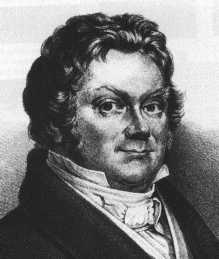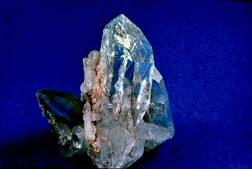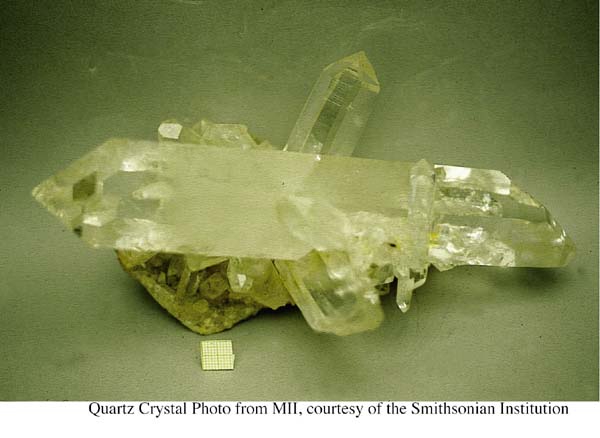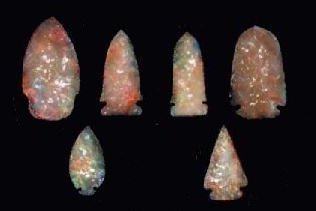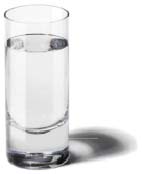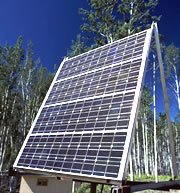|
|
|
|
|
... ... ... ... ... ... |
THE BASICS
HISTORY: Elemental silicon was prepared for the first time by Berzelius, in 1823, who placed silicon tetrafluoride in the presence of warm potassium. However, it was thought that Gay-Lussac and Thenard had already tried to obtain the amorphous silicon by the same method, in 1809. The substance obtained by Berzelius was a purer product as a result of exhausting filtering. Berzelius prepared silicon from the reaction of potassium fluorsilicates with potassium. In its crystalline form, silicon was first prepared by Deville, in 1854, through the electrolysis of impure sodium-aluminum chloride with about 10% of silicon. At the beginning of the 20th century (1907), Potter studied the interaction of silica with the carbon, which prepared the way to the process of obtaining silicon for commercial purposes during the whole century. SOURCE: Silicon makes up 25.7% of the
earth's crust by mass and is the second most abundant element. It does not occur free in nature but occurs chiefly as the
oxide and as silicates. The oxide includes sand, quartz, rock crystal,
amethyst, agate, flint and opal. The silicate form includes asbestos,
granite hornblende, feldspar, clay and mica. OCCURRENCE: Silicon occurs in nature combined with oxygen, in the form of silicon dioxide, and with oxygen and several metals, in the silicate form, but is never found isolated. As a whole, the silicates and the silica represent 60% of the terrestrial crust. The SiO4 is the primary structural unit of all these substances. The silicon dioxide, commonly called silica, is one of the most important silicon compounds occurring in nature. This compound occurs in three different crystalline forms: quartz, tridymite and cristobalite. These last two can only be found in volcanic rocks and do not have industrial applications. During the test of the first atomic bomb in New Mexico other silicon crystalline form appeared: the keatite. The quartz is very common and it can be found in granite, sand and sandstone. It is a piezoelectric substance used to stabilize amplifier circuits, to measure high electrical potentials or to measure high instantaneous pressures. There are sufficiently big and pure quartz crystals in nature to be used for optical purposes. There are also several forms of amorphous silica with water, such as the opal or the geyserites. From these, the black opal of Australia stands out, being one of the most valuable precious stones. USES: Silicon is one of the most useful elements to mankind. Sand and clay, which both contain silicon, are used to make concrete and cement. Sand is also the principal ingredient of glass, which has thousands of uses. Silicon is a component of steel, and silicon carbides are important abrasives and also used in lasers. Silicon is present in pottery, in enamels, and in high-temperature materials. Increasing use for silicon is now being found in micro-electronic devices. The silicon is usually doped with boron, gallium, phosphorus or arsenic for use in transistors, solar cells, rectifiers and other instruments. BIOLOGICAL INFO: Silica occurs in living organisms. It is possible that silicon may have played an important, perhaps even necessary role, in the origin of life on the earth. The pattern of deposition of silica in plants is biologically specific and it is possible to identify plants by microscopic examination of silica particles. In some cases, silica appears to be a factor in the resistance that plants offer to diseases and insects. Human tissues often contain from 6 to 90 mg of silica per 100 grams of dry tissues. Lung tissue may vary from 10 mg in infancy to as much as 2000 mg per 100 grams in old age. Miners, stonecutters, potters and others engaged in work where siliceous dust is breathed in large amounts often develop a serious lung disease called silicosis. GENERAL INFO: Amorphous silicon is a brown powder, and crystalline silicon is a gray color with a metallic luster. Silicon is relatively inert.
|

